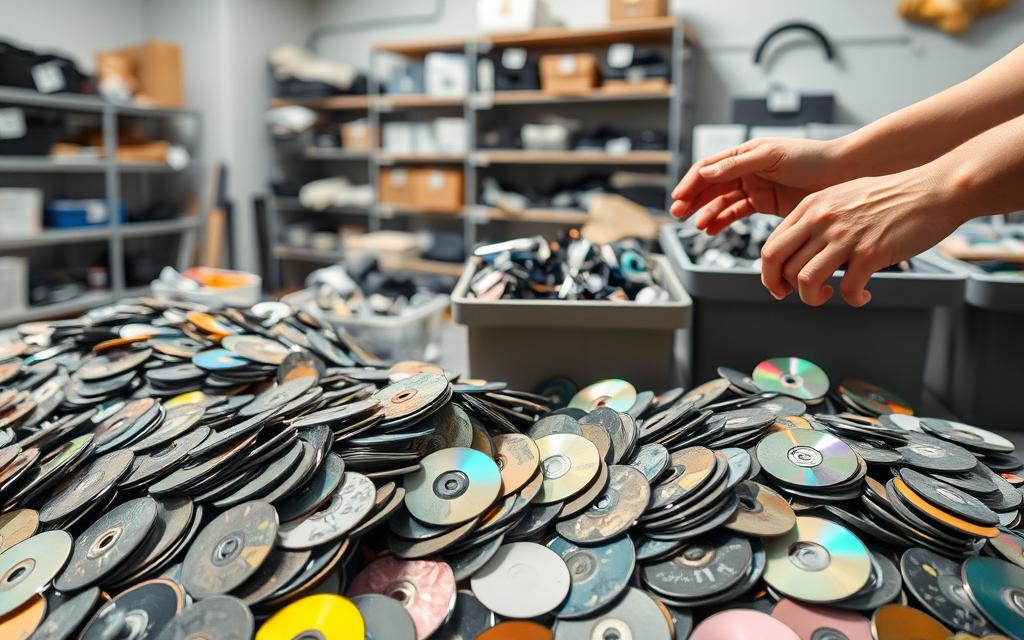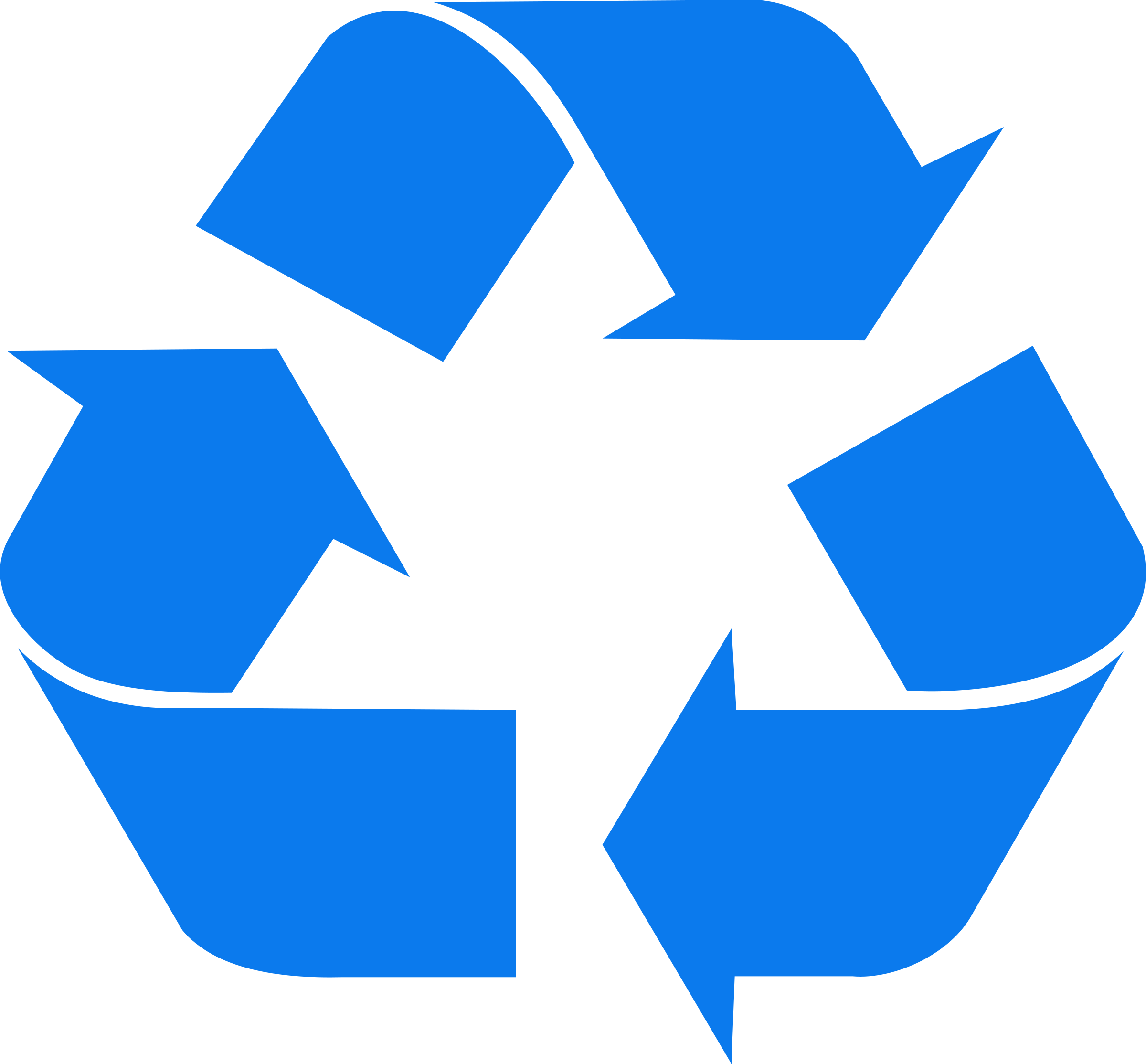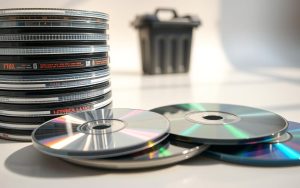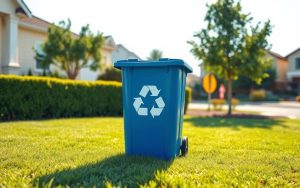Millions of CDs and DVDs end up in landfills every week, contributing to environmental pollution. These items are made of polycarbonate and polystyrene, materials most curbside programs reject due to mixed resins. With the shift to digital media, physical discs are becoming obsolete, creating a surplus that demands responsible disposal.
Specialized recycling programs offer a solution, ensuring these materials are processed correctly. Creative reuse, such as turning discs into art or functional objects, is another eco-friendly option. Verified donation channels also provide a way to give unwanted CDs and DVDs a second life.
Programs like Decluttr’s cash-for-recycling initiative offer a modern alternative to landfill disposal. By exploring these options, we can reduce the environmental impact of plastic pollution from non-recycled media.
Why Recycling CDs and Discs is Important
Discarded media items like CDs and DVDs pose a significant threat to our planet. These materials, made of polycarbonate and polystyrene, take over a million years to decompose. When left in landfills, they release harmful microplastics into waterways, contaminating ecosystems.
According to GreenDisk research, the degradation of polycarbonate in discs contributes to microplastic pollution. This not only affects marine life but also enters the food chain, impacting human health. Proper recycling is essential to mitigate these risks.
The Environmental Impact of Discarded CDs and DVDs
When CDs and DVDs are improperly disposed of, they break down into tiny particles. These microplastics infiltrate rivers, lakes, and oceans, harming aquatic organisms. A 2024 Earth911 survey revealed that 94% of municipal programs reject these items due to resin mixing.
“The long-term environmental damage from discarded discs is irreversible. Recycling is the only sustainable solution.”
Jewel cases, made of PP#5 plastic, are easier to recycle than discs, which are #7 plastic. However, DVDs contain binder components that complicate material separation, making recycling even more challenging.
Challenges in Recycling CDs and DVDs
One major hurdle is the economic unviability of curbside recycling for these items. Sorting costs are high, and most facilities lack the technology to process mixed resins. Mail-in options, like GreenDisk, charge $15-$40 per box, which can deter individuals.
| Material | Recyclability | Challenges |
|---|---|---|
| Jewel Cases (PP#5) | Easier to recycle | Limited acceptance |
| Discs (#7 Plastic) | Harder to recycle | Resin mixing, binder components |
Failed legislation, such as California’s SB-568, highlights the difficulty in banning media from landfills. Without systemic changes, the burden falls on individuals to seek specialized programs for proper disposal.
How to Recycle CD Discs: Step-by-Step Guide
Proper disposal of old media items is essential for reducing environmental harm. Many programs and services are available to help you handle these materials responsibly. Whether you’re dealing with CDs, DVDs, or even VHS tapes, following the right steps ensures they don’t end up in landfills.

Finding Local Recycling Programs
Start by locating nearby facilities that accept old media. Earth911’s ZIP-code search tool covers over 12,000 U.S. drop-off points. This makes it easy to find a program near you. Some retailers, like Best Buy, also offer electronics recycling, though they limit items to three per day.
Mail-In Recycling Options
If local options are limited, mail-in services are a great alternative. GreenDisk charges $29.95 per box but requires scrubbing disc surfaces with isopropyl alcohol. For larger quantities, the CD Recycling Center of America offers free recycling for over 500 units. Decluttr provides prepaid shipping labels for 50 or more discs, making it a convenient choice.
Preparing Your CDs and DVDs for Recycling
Before sending your items, ensure they’re ready for processing. Remove paper inserts from jewel cases and clean disc surfaces. Cracked discs, homemade mixtapes, and floppy disks are typically prohibited. Use the following table to compare popular recycling services:
| Service | Cost | Requirements |
|---|---|---|
| GreenDisk | $29.95/box | Surface scrubbing |
| CD Recycling Center of America | Free (>500 units) | No specific prep |
| Decluttr | Prepaid labels | 50+ discs |
By following these steps, you can ensure your old media is handled responsibly. This not only reduces waste but also supports a healthier planet.
Creative Ways to Reuse Old CDs and DVDs
Old media items like CDs and DVDs can find new life through creative reuse. Instead of letting them gather dust or end up in landfills, explore innovative ways to repurpose them. From art projects to donations, these methods not only reduce waste but also add value to your community.
DIY Art Projects Using CDs and DVDs
Turn old discs into stunning art pieces. Michaels Crafts offers workshops for creating mosaics, wall art, and even jewelry. Etsy sellers have made over $45 by crafting upcycled disc jewelry. For a practical twist, transform 15 discs into a garden reflector system to protect plants from pests.
Classrooms can also benefit. Sanitized discs make excellent math manipulatives for hands-on learning. Upcycling is a fantastic way to blend creativity with sustainability. For more ideas, check out this guide on upcycling old media.
Donating CDs and DVDs to Secondhand Stores
Secondhand stores like Half Price Books pay $0.50 to $2 per qualifying item. Libraries are another great option. A 2023 ALA report shows 78% of U.S. libraries accept case donations. The Austin Public Library’s case repair initiative saved $8,000 annually by reusing donated materials.
Donating is a simple yet impactful way to support local communities. It keeps music and movies accessible while reducing waste.
Repurposing CD and DVD Cases
Jewel cases can be repurposed in numerous ways. Use them as storage for small items like screws or beads. Some crafters turn them into photo frames or organizers for desks. Libraries often repair and reuse cases, extending their lifespan.
For larger quantities, consider donating to programs that accept cases. This ensures they’re put to good use rather than discarded. Creative reuse of these items highlights the importance of sustainability in everyday life.
Conclusion
Taking action to manage old media responsibly benefits both the planet and communities. Start by verifying local options for proper disposal. Explore creative reuse to give these items a second life. Finally, rely on certified recyclers to ensure they’re processed correctly.
According to EPA data, there’s been a 34% increase in recycling since 2020. Programs like Decluttr offer a $5 bonus for first-time recyclers, making it easier to participate. For illegal dumping concerns, contact the EPA directly.
For updated state-by-state guidelines, visit Earth911’s resource page. Together, we can protect the environment and reduce waste effectively.







